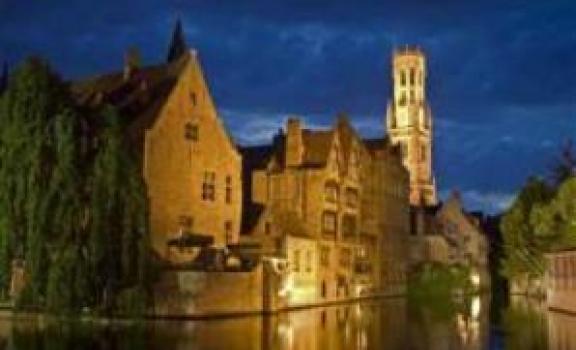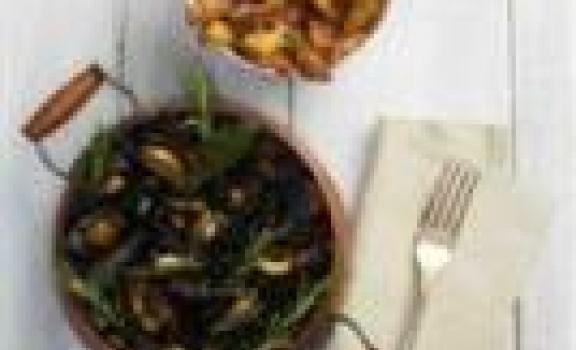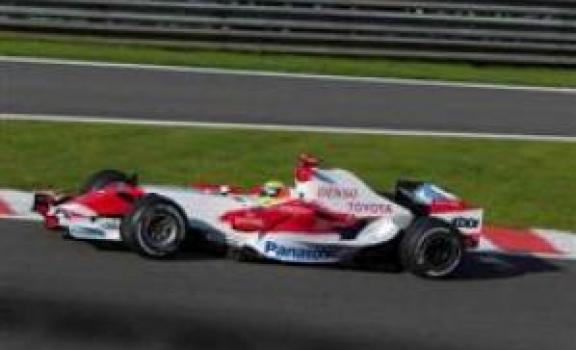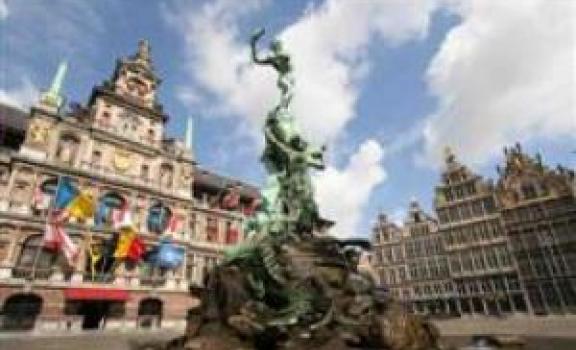Heading to Belgium for a degree or shorter period of study? Make sure you fit in these top ten things to do while you're there.
Famous for its beer and waffles, Belgium is a country that is often underestimated. Situated at the crossroads of Europe – bordering France, Germany, the Netherlands and Luxembourg – this small nation of ten million people is in fact a political hub, home to both the EU and NATO.
With its unique character and impressive array of natural and architectural beauty, Belgium has many an experience to offer. TopUniversities.com has come up with the top ten things any student should do to make the most of time studying abroad in Belgium.
1. Rock Werchter Festival
Nearest Universities: Vrije Universiteit Brussel (VUB); Universite Libre de Bruxelles (ULB); Katholieke Universiteit Leuven; Université Catholique de Louvain (UCL); University of Antwerp
Winner of the ‘Arthur award’ for the best music festival in the world for four years running (2003-2006), Rock Werchter is an unmissable four-day party and a chance to check out some of the world’s biggest and best bands. A list of acts that have appeared in recent years resembles a who’s who of the contemporary music scene: The Arcade Fire, Muse, Coldplay, The Killers, Red Hot Chilli Peppers, Oasis and REM, to name a few. It’s no wonder Rock Werchter attracts 130,000 people every year from all over the continent.
If music festivals are your thing, Belgium’s location at the heart of Europe ensures the continent’s summer festivals are at your fingertips. Other major Belgian music festivals include Pukkelpop and Dour (that’s the name of the region it’s held in, not a description of the bands!).
 2. Bruges - as beautiful as they say
2. Bruges - as beautiful as they say
Nearest university: University of Ghent
One of Europe’s best-preserved medieval towns and a UNESCO World Heritage site, Bruges is Belgium’s answer to Venice. A picturesque assortment of cobbled squares, canals and quaint architecture, Bruges may not be the place to go for a wild party, but it’s certainly easy on the eye.
Wandering around the pedestrianized centre, you’ll feel as if you’ve been transported back in time to a 15th century market town, (along with a few thousand other tourists for company!).
There are few better places to go for a relaxing weekend that will feel a million miles, and several hundred years, away from the hustle and bustle of modern city life. Bruges really is as beautiful as the guidebooks say it is.
3. Sample Belgian beer (be careful, it’s strong!)
Belgium is a nation that takes its beer very seriously. Well-known exported brands such as Stella Artois, Hoegaarden and Leffe are just the tip of the iceberg - microbreweries produce hundreds of beers ranging from pale ale to limbic and Flemish red.
Casual sippers will be spoilt for choice at the many beer-halls throughout the country, but the choice for the serious connoisseur is the specialist breweries run by Trappist monks.
Did you know? Beer has been around since 9,000BC, and throughout the Middle Ages Belgian monks consumed gallons of the stuff. They also had plenty of time on their hands to perfect their brewing technique.
Not all of the Trappist breweries are open to the public, but of the ones that are, perhaps the best-known is Chimay in western Belgium. Here, visitors can sample traditional beverages, as well as other minor deviations from the austere monastic lifestyle, such as cheese.
 4. Moules-frites at Ste-Catherine, Brussels
4. Moules-frites at Ste-Catherine, Brussels
Nearest Universities: Vrije Universiteit Brussel (VUB); Universite Libre de Bruxelles (ULB); Katholieke Universiteit Leuven; Université Catholique de Louvain (UCL)
Whereas the English go for battered cod with their chips, the Belgians choose 'moules' (mussels) as their accompaniment of choice with frites (chips). Arguably a somewhat more refined dish than that found across the channel (a greasy riot of carbohydrates wrapped in translucent newspaper), moules-frites is particularly popular in French-speaking parts of Belgium, including Brussels.
No trip to the capital would be complete without a plate of moules-frites washed down with a glass of Belgian beer. For the very best in town, head to Ste-Catherine - the fish market neighborhood.
5, Explore the Ardennes, using pedal power
With its rustic scenery and flat landscape, the Belgian countryside is a casual cyclist’s dream. Though the Ardennes feature a few more ups and downs than the northern parts of the country, they are generally of a fairly gradual nature – and the beautiful countryside views will more than make up for any exertion.
Located in the south of Belgium in Wallonia, the Ardennes are known as Belgium’s ‘green lung’. Covered in picturesque forests, secluded rivers and unspoilt nature reserves, the Ardennes form a perfect backdrop for a relaxing ride.
 6. Get trackside for the Belgian Grand Prix
6. Get trackside for the Belgian Grand Prix
Nearest university: University of Liege
The Spa-Francorchamps racetrack near the city of Liege in south-east Belgium hosts the annual Formula One (F1) Belgian Grand Prix, one of the largest and most highly-anticipated races in the F1.
For those who are already racing fans, a trip to Spa-Francorchamps will be an obligatory pilgrimage to a track that has a unique place in F1 history; for those who are new to F1, Spa’s reputation for fast, exciting races makes it a perfect introduction to the sport.
Did you know? The Spa racetrack was actually removed from the tour for several years in the 1970s and 80s after a series of fatal crashes. These days many safety improvements have been made, but the track is still regarded as the toughest around. In the somewhat over-enthusiastic words of the BBC: “Superlatives seem inadequate to describe the wonders of Spa-Francorchamps, the greatest modern motor racing circuit in the world.”
7. Explore Brussels, home of the EU
Nearest universities: Vrije Universiteit Brussel (VUB); Universite Libre de Bruxelles (ULB); Katholieke Universiteit Leuven; Université Catholique de Louvain (UCL)
As a cultural capital, Brussels may not have a reputation to match that of its neighbors (Paris, Berlin, Amsterdam), but in administrative terms at least, it is one of the nerve-centres of international politics. Brussels is home to both the EU and NATO, so for those with an interest in politics this city is a must-see.
If you’re serious about getting involved in international relations, part of your study abroad experience could be volunteering at one of the many political organizations based in the city. Now that’s got to kick-start your career!
For those of a less political persuasion, Brussels has plenty to offer as a historic capital. Check out Grande Place, with its famous architecture and even more famous urinating statue.
The main market square in Brussels, Grande Place is in the heart of the Old Town, and hosts all the city’s major celebrations such as the annual New Year’s Eve party. It also has regular street performances, and many restaurants serving traditional Belgian cuisine (a safe bet is T Kelderke - it’s crowded but cosy and the food is superb).
 8. Check out the chic fashion scene in Antwerp
8. Check out the chic fashion scene in Antwerp
Nearest university: University of Antwerp
Home of the second largest port in Europe, Antwerp is an enticing mix of old and new. Traditionally a centre of commerce, with its prosperity in the 16th Century reflected in the ornate baroque architecture of the city centre, it is now making its mark on fashion and art.
Antwerp has an up-and-coming scene, and the city’s Royal Academy of Fine Arts is one of the most important fashion colleges in Europe. For art-lovers the Academy also houses an outstanding collection of old masters, boasting famous works by Rubens, Van Dyck and Titian.
9. Have a giggle at Belgium’s Comic Strip Center
Nearest Universities: Vrije Universiteit Brussel (VUB); Universite Libre de Bruxelles (ULB); Katholieke Universiteit Leuven; Université Catholique de Louvain (UCL)
It was Belgium that gave the world Tintin and the Smurfs, and a Belgian who first named comic strips the ‘ninth art’. For all its political seriousness, this nation has done more than just about any other to justify the use of such an exalted moniker.
The Comic Strip Center in Brussels documents the history of the industry in Belgium, with over 4,000 metres of original illustrations. Even if you’re not particularly into comics or graphic novels, the museum building is a masterpiece of art nouveau in itself. Paying it a visit is a great chance to step outside the mainstream and learn about a more unusual cultural movement.
 10. Visit the university city of Ghent
10. Visit the university city of Ghent
Nearest university: University of Ghent
Like Bruges, Ghent has a picturesque medieval town centre intersected by canals, cobbled streets and tram lines. Unlike Bruges, however, Ghent is a thriving university city with a happening nightlife and a reputation for cultural festivals.
These include the Gentse Feesten (an annual music and theatre festival that attracts two million visitors every summer) and the Flanders International Film Festival. For those into clubbing, I Love Techno held annually in the autumn, is one of Europe’s biggest techno parties featuring big-name DJs and attracting clubbers from all over the world.
For those seeking a release from the idyllic but reserved lifestyle of some parts of the country, Ghent could be the place to let your hair down for a weekend!
Once you’ve finished those:
- Watch one of the top Belgian football teams – Anderlecht, Standard Liege and Club Brugge
- Visit the World War One museum and battlefields in Ypres
- Sample the famous Belgian waffles
- Take advantage of Belgium’s location by visiting a nearby European city – Amsterdam, Paris, Geneva or Frankfurt – or hop across the channel to London!
- Visit the Frietmuseum in Bruges to find out the history of the potato - but more importantly, the secret to making Belgian frites